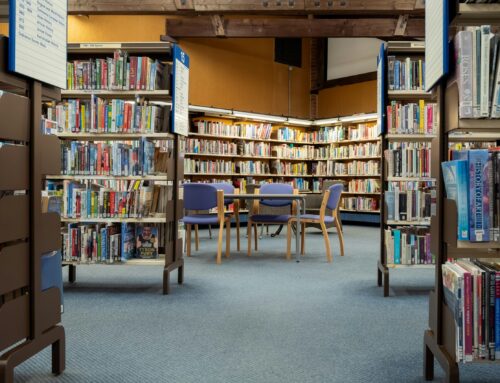 Since the pandemic, the demand for alternative modes of education has risen, with many parents choosing to homeschool their children for more freedom, opt for private schools for supposed higher quality education, or try to find ways to improve already existing systems. A growing number of parents, however, are choosing to find or join “microschools,” which many refer to as the sweet spot between homeschooling and public schools.[1] But how effective is this structure?
Since the pandemic, the demand for alternative modes of education has risen, with many parents choosing to homeschool their children for more freedom, opt for private schools for supposed higher quality education, or try to find ways to improve already existing systems. A growing number of parents, however, are choosing to find or join “microschools,” which many refer to as the sweet spot between homeschooling and public schools.[1] But how effective is this structure?
What are microschools and how do they work?
The National Microschooling Center defines microschools as “innovative and personalized multifamily learning environments.” Also known as learning pods, microschools are the modern version of a “one-room schoolhouse.”[2] Students with similar interests or challenges attend classes, learning activities, and other types of programs together within the same room and led by the same instructor. Microschools are often community-founded, but they can also be an extension of a larger governing body or organization. Private schools can offer the extra instruction as a resource, or it can be a time and place for homeschooled students to interact with each other and experience group learning.
What are the benefits of microschools?
There are some benefits to this learning structure, where size and individual focus is a major component of such. On average, microschools have no more than 16 students, which means that they all get a lot more one-on-one learning and support than they would in other school systems.[3] This allows for the students to build a sense of community more easily, as they would interact with this small group of students when they’re learning. It removes the hesitancy and shyness for some to ask questions and get clarity, ensuring that they fully understand every lesson. In combination with the small enrollment, many microschools are set up with “age level” classes.[4] Not all students are always grouped together, and smaller pods may emerge within the student body as their age and learning levels are assessed. For example, middle school age students may all be grouped together into one class, allowing for those that are having some difficulty advancing the space to receive reinforcement, while those that may be ahead of the curve can branch forward—all while keeping them at roughly the same level.
Microschools can also be the ideal environment for gifted students or students with disabilities. The increased attention from the smaller class sizes, as well the “interest learning” aspect allows gifted students, or students with very specific talents, to learn about a subject in greater depth and do so at a level above their grade, if applicable.[4] For students with disabilities, a tailored curriculum and added support can facilitate their learning and take care of distractions or triggers that are difficult to control in larger school systems.[3] Lastly, microschools offer students centered learning as opposed to the traditional style of lecturing. They aim to teach according to their students’ needs and interests, all while challenging them to grow.
Microschools that are not independent (i.e. They are a part of a charter school, or an organization) can also be great sources of support for students who attend traditional public, private or charter schools, and are homeschooled. They can function as after school study groups, or like Saturday or Summer school to help students who need intensive learning. [5]
What are some of the challenges?
There are many caveats to this learning system, however. A major worry is that aside from The National Microschooling Center, there is no major regulatory body to measure or enforce educational standards across the board.[3] While microschools can be just as effective as other closely monitored school systems, the lack of a regulatory body does make it difficult to grasp how effective the teaching and learning methods are in this environment, and whether or not their students’ needs are being met. It’s difficult to find or construct standardized data. Educational quality itself is a big concern as only 16% of microschools are accredited, and many do not require teachers to have prior certification.[3] Therefore, it’s difficult to know at a large scale if the people teaching these children are in fact equipped with the necessary education and training to do so.
At a student level, due to their small size, microschools can potentially make it harder for students’ needs to be met. If every single student—as opposed to smaller pods within the microschool—is at a different level, and they have wildly different needs or goals from one another, it is more difficult for the instructors to make appropriate adjustments and concessions to accommodate them.[5] The small class sizes are typically beneficial, but when there is simply too much variation in age, needs, and goals, learning simply does not flow as smoothly.
Another major issue is the lack of free transportation, lunch, supplies and extracurriculars offered.[5] Microschools often do not have access to the same resources, funding, or facilities that other schools do, then placing a strain on families that depend on these resources.
Conclusion
Interest in microschools continues to grow, even after the pandemic surge.[3] With this interest, more attention has been placed on the sector and some legislation has been made to monitor microshools to ensure that they are properly serving their students and their families. A microschool pilot program is being launched in Washington state, and a bill has been proposed that “prioritizes the approval of microschools that serve students with disabilities, students not meeting academic standards, and students who need transitional bilingual instruction.”[1] In essence, government officials are recognizing the validity of the system and are attempting to provide funding for them.
PSG
Publishing Solutions Group is dedicated to excellence in educational development, and with the growing demand for microschools, it is imperative that we remain informed to meet evolving needs. By focusing on the benefits and challenges of this schooling style, we can ensure our content development empowers educators and enhances student success. Our commitment to outstanding service supports impactful, personalized learning experiences.
[1]https://www.edchoice.org/engage/microschools-what-are-they-what-do-they-cost-and-whos-interested/
[2]https://microschoolingcenter.org/faq
[3]https://thehill.com/changing-america/enrichment/education/4574859-the-us-is-experiencing-a-boom-in-microschools-what-are-they/
[4]https://thecorecoaches.com/archives/55119
[5]https://www.joinprisma.com/blog/what-are-microschools
Image free to use under the Unsplash license.




